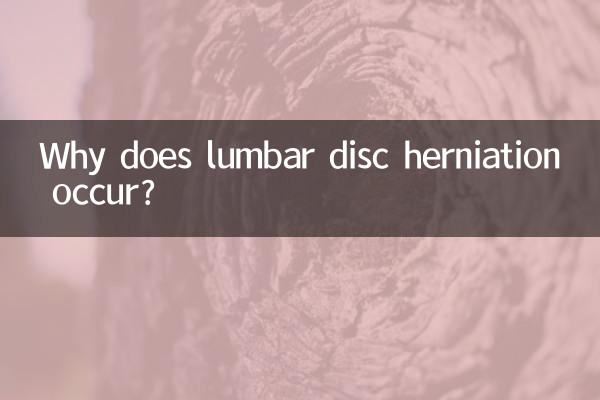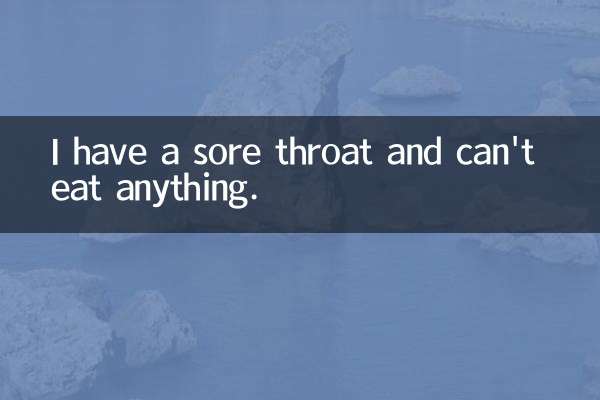Why does lumbar disc herniation occur?
Lumbar disc herniation is a common spinal condition that has been frequently discussed on social media and health forums in recent years. With the changes in modern lifestyle, more and more people are troubled by lumbar spine problems. This article will combine the hot topics and hot content on the Internet in the past 10 days and conduct a structured analysis from the causes, symptoms, prevention and treatment to help everyone better understand this disease.
1. Main causes of lumbar disc herniation

Lumbar disc herniation is usually caused by long-term poor posture, overexertion or trauma. Here are common triggers:
| Reason | Detailed description |
|---|---|
| Sedentary for long periods of time | Office workers, drivers, etc. stay seated for long periods of time, resulting in increased pressure on the lumbar spine. |
| strenuous exercise | Sudden twisting or weight-bearing movements can damage the discs. |
| Growing older | Intervertebral discs gradually degenerate with age and their elasticity decreases. |
| Obesity | Excess weight increases the burden on the lumbar spine and accelerates disc wear. |
| bad posture | Wrong postures such as bending down to carry heavy objects or sleeping on a soft bed can easily cause problems. |
2. Typical symptoms of lumbar disc herniation
Patients often present with waist pain, numbness or radiating pain in the lower limbs. The following are common symptoms:
| Symptoms | performance |
|---|---|
| low back pain | Persistent dull pain or sudden sharp pain, aggravated by movement. |
| Radiating pain in lower limbs | Pain extending from the lower back to the buttocks, thighs, or calves. |
| Numbness and weakness | A pinched nerve causes numbness or muscle weakness in the leg. |
| Restricted activities | Difficulty in bending, turning and other movements. |
3. How to prevent lumbar disc herniation
Prevention is better than cure. You can effectively reduce the risk of disease by adjusting your living habits:
| Precautions | Specific methods |
|---|---|
| maintain correct posture | Sit up straight and avoid bending over for long periods of time. |
| moderate exercise | Strengthen core muscle training, such as swimming and yoga. |
| control weight | Reduce the burden on the lumbar spine and avoid obesity. |
| Use your waist wisely | When lifting heavy objects, bend your knees and squat to avoid bending directly. |
| Choose the right mattress | Moderate hardness to maintain the natural curvature of the spine. |
4. Treatment methods for lumbar disc herniation
Depending on the severity of the condition, treatment methods can be divided into conservative treatment and surgical treatment:
| Treatment | Applicable situations |
|---|---|
| rest and medicine | In the acute stage, you need to stay in bed and take anti-inflammatory and analgesic drugs. |
| physical therapy | Traction, massage, and acupuncture relieve symptoms. |
| Rehabilitation exercises | Strengthen the strength of the lower back muscles, such as the Xiaoyan Fei movement. |
| surgical treatment | Considered when there is severe nerve compression or when conservative treatment fails. |
5. Related hot topics on the entire network in the past 10 days
The following are recent popular discussions on social media about lumbar disc herniation:
| platform | Hot content |
|---|---|
| #lumbarspinal self-rescue guide for sedentary people# has been read more than 100 million times. | |
| Douyin | The video "5 Actions to Relieve Back Pain" has more than 500,000 likes. |
| Zhihu | "Can lumbar disc herniation heal on its own?" triggered thousands of discussions. |
| little red book | The number of note collections "Recommended Waist Protector for the Office" has surged. |
From the above analysis, it can be seen that lumbar disc herniation is closely related to daily life habits. Maintaining good posture, moderate exercise and scientific treatment are key. If relevant symptoms occur, it is recommended to seek medical treatment in time to avoid worsening of the condition.

check the details

check the details